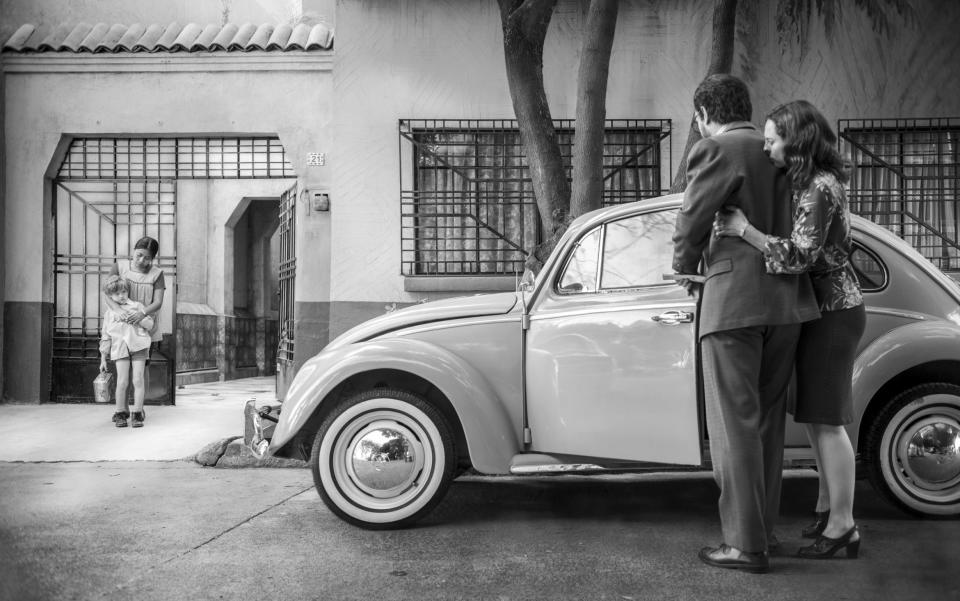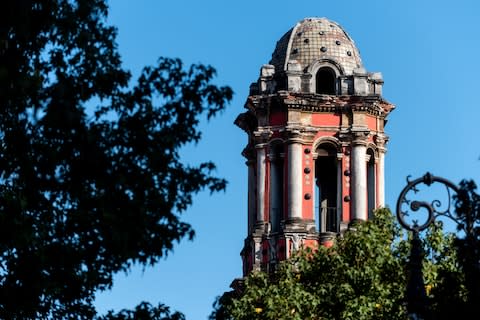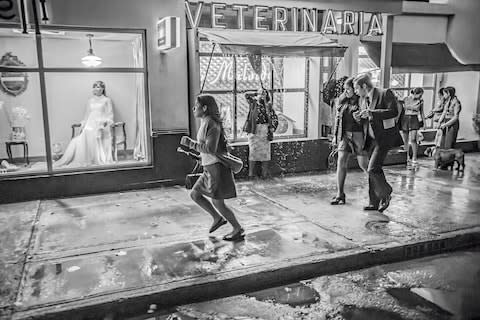The real Roma: How to discover Mexico City's most hipster district

Roma, the Bafta-winning, Oscar-nominated film, is shot in arty black and white, and evocative of the early Seventies, when director and cinematographer Alfonso Cuarón grew up. Roma, the district, is very much in full colour – and is arguably the most thrustingly contemporary of all Mexico City’s colonias (neighbourhoods).
During the last decade, Roma has come to rival the wealthier, leafier districts of Polanco and Condesa and is now one of the most gentrified residential-cum-entertainment areas in the Mexican capital. Avenida Álvaro Obregón, its main drag, is hipster central, a whirl of coffee shops, thronging eating places (from the kitsch to the rather classy), discreet speakeasys and some of the city’s most feted independent fashion boutiques. The one venerable institution is Casa Lamm, built in the 1900s in the vaguely French style then popular in Mexico City. Formerly part of a ranch, it comprises an art space, cultural centre and restaurant. A lovely patio is filled with tropical blooms and sculptures, including a breathtaking bronze bird-man by Jorge Marín.

But cineastes and location-scouting tourists hoping to relive the film’s scenes, or perhaps retake those long panning shots with their smartphones, will have to use their imagination a wee bit. The 1985 earthquake razed many buildings as well as emptying the neighbourhood of middle-class families. Moreover, some years ago Roma was split into two colonias; while the food, drink and nightlife buzz is concentrated around Roma Norte, Cuarón’s house, at Calle Tepeji 21, was in the heart of Roma Sur.
The façade of the family home appears in the film, though, due to the better light, the house at no 22 was used – while the interiors were shot at another house in the Narvarte colonia, well south of the central districts. Roma Sur, which remains residential and feels mellow thanks to the absence of major trunk roads, has retained a number of neo-baroque houses built by exiles returning from Paris after the 1910-1920 revolution. There are a few cool cafés and, at Lulu, a very smart little art gallery, but these share the sidewalks with old-school grocer’s stores and unpretentious juice bars.
Roma’s lenses are allowed to linger on the low-slung houses and sun-dappling trees of the director’s beloved colonia. The youngest member of the semi-fictional family, Pepe, attends a kindergarten called the Kínder Condesa – a school three blocks to the west on Tlaxcala 105 – still operating as Instituto Condesa. Cuarón told a Spanish newspaper that he finds Roma Sur “more edgy (atrevida)” than Roma Norte and appreciated the fact that it still has the family businesses and workshops that he was looking for to recapture the texture of 1970-71.

But films need geographical as well as poetic licence, and Roma often strays beyond Colonia Roma. One of the film’s most dramatic scenes, of violent repression and murder, takes place in calle Tlóloc, in Tabacalera, north of Roma Norte. Cleo and Fermín have dates at the Teatro Metropólitan cinema in the historic centre. The La Casa del Pavo cake shop used in the film is also in the centre – at calle Motolínia 90. The Metro Normal underground station is an hour on foot from Roma Sur – and more than 20 mins by car, thanks to Mexico City’s infamous traffic. Sometimes, reality just isn’t enough. The Avenida Baja California, in Roma Sur, was recreated on set.
But New World cities, even megalopolises, change more slowly than do Europe’s. Visitors to Mexico City will certainly tap some of the atmosphere of this beautiful film on walks around Roma, Centro, Polanco and the other mainly residential colonias. Certainly, they’ll see the Beetle cars, and the mestizo maids from the provinces in uniform, the Art Deco facades and the small tropical palms in the front gardens of the house-proud, the beguiling afternoon light of this high-altitude sprawl, and the knife sharpeners touting their bicycle-mounted grindstones by whistling Papageno-like trill on a little pipe – just as in Cuarón’s Roma.

Getting there
British Airways flies from London to Mexico City from £636 return including taxes/fees/carrier charges. To book, visit ba.com or call 0844 493 0787. The route operates year round. Flight frequency varies throughout the year from five a week to daily; at its peak there is up to one flight per day.
Where to stay
La Valise in Roma Norte is perfectly located and also one of the city’s loveliest – and, with just three rooms, tiniest – hotels. From £238 per night.

Safety and security
Roma is a safe, busy, affluent residential and commercial district. But Mexico City is a large city and a gaping chasm of social inequality exists between the haves and have-nots. Petty theft and burglary are not uncommon. Leave valuables in your room safe and avoid poorly lit areas after dark – the Centro (aka centro histórico) is particularly empty on Sunday and weekday nights, so use taxis even to travel short distances. Don’t accept alcoholic drinks or packages from strangers. Recent shootings in Cancún are a cause for caution rather than alarm. Crime in Mexico, while not restricted to marginal neighbourhoods or frontier regions, remains largely internecine; many killings relate to drug wars between rival gangs.

